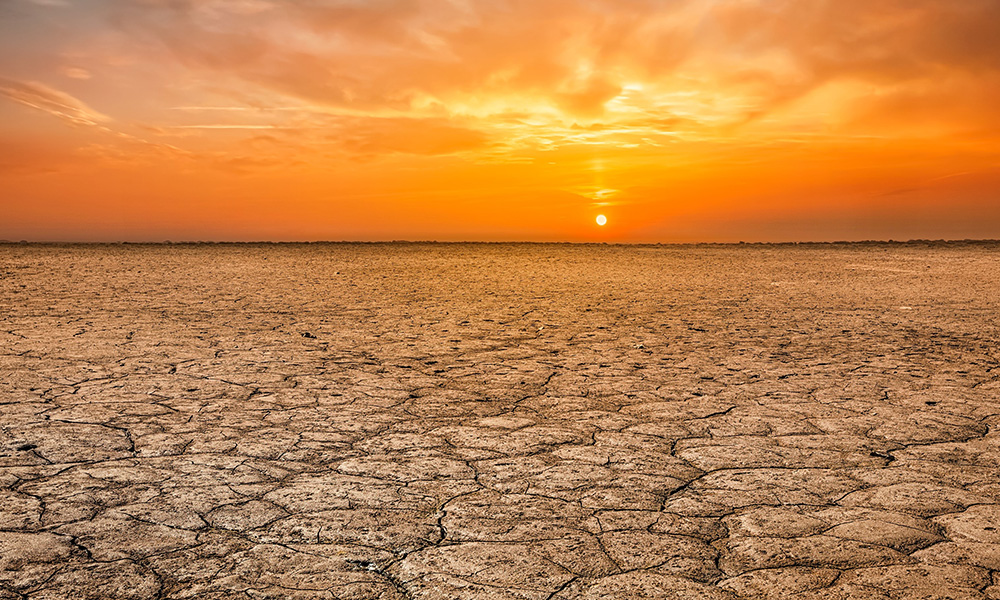Verdantix calls for employers to take steps to protect staff from physical climate risks
The firm advocated for the use of a number of technology solutions to manage physical climate health and safety risks

Verdantix has warned that climate change means that people are at greater risk of “occupational heat exposure, and employers need to develop plans to manage this risk”. The independent research and advisory firm stated that “most employers currently have little or no systems in place for mitigating this and other climate-related physical threats”.
To tackle this, the firm says that employers will need to consider using a range of technology-enabled mitigation solutions including deploying robotics such as drones that can be used to gather sampling data including air quality, noise and pollutant data, to making employees wear devices that can track their exposure to heat.
“So far this summer, across Europe we have seen extreme record- breaking heatwaves and the devastation these have brought. Field workers and those exposed to heat risks face increased dangers during these unprecedented times. However, employers have a duty of care towards their staff to ensure they are not at risk of suffering from occupational heat exposure,” explained Bill Pennington, Research Director, Environment, Health & Safety at Verdantix.
In May 2022, the WMO said that there is a 50:50 chance of global temperature temporarily reaching 1.5C threshold in five years. In July, Middle East Consultant announced that its Wellness in Construction Summit will take place in Dubai on 28 September – the event is free to attend for construction industry professionals.

“Extreme weather health and safety risks are not only applicable to field workers; firms need to have procedures in place to assess the risk of traveling to work and remaining on-site should a malign weather system come in. Consider eight workers that were killed in a Kentucky-based candle factory in 2021 following a decision not to let workers leave their shift early to evade an oncoming tornado. A similar situation also occurred in 2021 at an Illinois-based Amazon warehouse whereby six employees were killed.”
He added, “In the US alone, at least 384 workers have died from environmental heat exposure in the last decade, and the three-year average of worker heat deaths in the country has doubled since the early 1990s.”
The firm pointed out that while extreme weather is a variable that Environmental, Health and Safety (EHS) functions cannot control, a hierarchy of technology-enabled mitigation solutions can be implemented to stem their impact. These range from the elimination of risk through deploying robotics, to tracking worker exposure using wearable devices.
In an exclusive interview with Middle East Construction News (MECN), WSP Middle East’s Sophia Kee also stated, “We have 93% certainty within the next five years of hitting new temperature highs.”

In response to rising temperatures, Verdantix advocated for the use of a number of solutions to manage physical climate health and safety risks including: Critical event management software with weather decision technologies; Wearable devices to track exposure; EHS Software to support the management of worker exposure, alerts and training and robotics to eliminate the risk of heat exposure at their source.
Christopher Sayers, Verdantix Analyst remarked, “Going forward, the demand for solutions that support EHS functions in navigating physical climate risks will increase. This is due to the rising prevalence of extreme weather events and employers assuming greater responsibility for worker safety in relation to heat stress and other factors. Organisations will need to be prepared, both through processes and technology, for a range of new physical climate risks.”
Kim Knickle, ESG & Sustainability Research Director, Verdantix commented, “Climate-related extremes have caused $14.5bn in financial losses in Europe per year since 2011, and this will continue to increase, with droughts alone set to cause $12bn in annual losses if global warming is limited to 1.5C.”
She concluded, “Firms must react to these increasingly costly climate events and improve their climate resilience. By investing in digital solutions firms can evaluate and manage the climate risk exposure of their physical assets and investments, which should include assessing mitigating actions and transition plans.”
Earlier in July, Verdantix urged building facility managers to secure building systems against cyber-attacks.






















